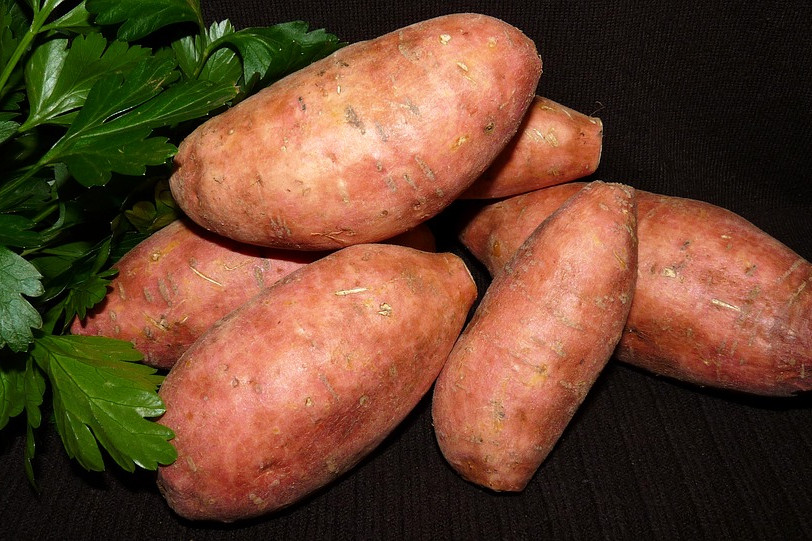The Glycemic Load is a classification of foods that have carbohydrates, which measures its impact on the body and blood sugar levels. A simple way to be making healthy diet choices is following the Glycemic Index. It compares food items with the same carbohydrate content according to their potential for raising blood glucose levels. Glucose shows a higher blood glucose response in comparison to fructose.
Sweet Potatoes are a staple in several parts of the world. It is generally confused with yams, which actually have a drier texture and have more starch as compared to sweet potato. Sweet Potato is a great source of fiber, potassium, vitamins, and several other essential nutrients. It is known to have a variety of health benefits too. The Internation GI Tables have assessed and found that the Glycemic Index of sweet potatoes is 54.

Sweet Potato is a very versatile and delicious vegetable, and it comprises healthy nutrients like
- Fiber
- Pro-Vitamin A
- Vitamin C
- Potassium
- Manganese
- Vitamin B6
- Vitamin B5
- Vitamin E
- Beta Carotene
- Chlorogenic Acid
- Anthocyanins
How to Calculate Glycemic Load of Sweet Potato?
The standard Glycemic index of sweet potato is 54. The high glycemic index of the fruit helps in reducing the risks related to cardiovascular diseases. If we want to talk about diet, the key to prevent diabetes or any chronic illness is to distribute the carbohydrate consumption content throughout the day and manage the sugar levels in the body correctly—the glycemic load for one cup of chopped sweet potato is 14 .6. It is often recommended carbohydrate option before a workout.
The Formula/Procedure For Calculation of Glycemic Index of the Sweet Potato :
GL = GI * carbs / 100
where
- GL – glycemic load;
- GI – glycemic index;
- and carbs – the amount of carbohydrates in the portion.

| SL.NO | SWEET POTATO BY WEIGHT IN (g) | GLYCEMIC LOAD |
| 1. | 100 g of Sweet Potato | 10.8 (low) |
| 2. | 250 g of Sweet Potato | 27 (high) |
| 3. | 500 g of Sweet Potato | 54 (high) |
| 4. | 1 Kg of Sweet Potato | 108 (very high) |
| 5. | One Whole Sweet Potato | 14 (medium) |
| 6. | 1 Cup of Sweet Potato | 14.6 (medium) |
Is Sweet Potato Safe to Consume If You Have Diabetes?
For anyone who has diabetes, it is imperative to balance and maintain blood sugar levels. Caiapo, which is a kind of white sweet potato, is known to improve symptoms in people who have type 2 diabetes. This kind of sweet potato is known for not only decreasing fasting blood glucose and LDL cholesterol levels but also is known to increase insulin sensitivity. The fiber present in sweet potatoes is also known to be important because it lowers the risk of developing type 2 diabetes. Thus, sweet potatoes must be consumed by people who have diabetes.
Can I Eat Sweet Potato During a Fat-Loss Diet?
Even when you are on a strict fat-loss diet, you can consume sweet potatoes. However, be careful about the portion size you consume. It is very healthy and will provide important nutrients.

- A 100 g serving of sweet potato has a GL of 10.8 which is in the permissible levels.
- Anything more than 200 g of sweet potatoes shoud be taken rarely if you are on a fat-loss diet.
Can I Eat Sweet Potato During a Low-Carbohydrate Diet?
You can eat sweet potatoes on a strict low-carb diet. But, be careful about the portion size that you eat. We suggest you not consume more than 150 g of sweet potato per serving.
Is Sweet Potato High in Sugar?
100 g of sweet potatoes have 86 calories and are 77% water. It has 20 g carbs and 4 g of sugar. Although it is low in sugar, the amount of carbs present deters people from consuming the same. It must be remembered that it has very healthy carbs, which the body needs and must be added to your diet.